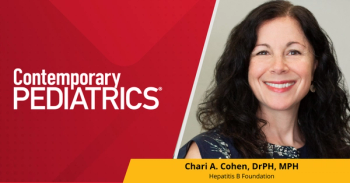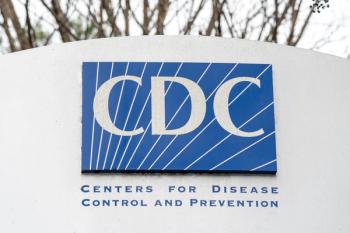
A headache with a red flag in a 10-year-old girl
The patient described the headache as “pressure-like,” episodes that occurred for 1 to 2 hours with high severity.
Case
A previously healthy 10-year-old girl presented to the primary care pediatric office with complaints of new onset headaches that were localized to the left side of her forehead and the left side of her face, sometimes additionally radiating to the back of her eye but not the eye itself. Accompanying the headache was redness of the conjunctiva that occurred only to the affected side of headache and only during the episode. The patient denied tearing/drainage from the eye with no visual complaints.
She had been experiencing this for 1 month prior to coming into the clinic, at first occurring once a week but then increasing to twice a day without any known triggers or pattern of timing; however, she noted that episodes began to occur more often later in the day. The patient described the headache as “pressure-like,” episodes that occurred for 1 to 2 hours with high severity. She has used acetaminophen/ibuprofen for relief of episodes but at times relieved without any medication. There was no reported family history of migraines or headache disorders.
Evaluation and testing
The patient was referred to neurology with high suspicion for a trigeminal autonomic cephalgia (TAC), such as short-lasting unilateral neuralgiform headache attacks with conjunctival injection and tearing (SUNCT) or short-lasting unilateral neuralgiform with cranial autonomic symptoms (SUNA). Pediatric neurology confirmed the clinical diagnosis of SUNCT given unilateral localization with repeated episodes of over 20 attacks with cranial autonomic symptoms.
Diagnosis
Short-lasting unilateral neuralgiform headache attacks with conjunctival injection and tearing (SUNCT).
Discussion
Headaches are the most common neurological issue across both the pediatric and adult populations.1 Headaches have major psychosocial impacts on various aspects of life and can largely negatively impact life.1 Short-lasting unilateral neuralgiform headache attacks (SUNHA) are a specific type of headache that is moderate to severe in severity, occurring from seconds to minutes, at least once a day, located strictly unilaterally.2 Two subtypes of SUNHA are described: short-lasting unilateral neuralgiform headache attacks with conjunctival injection and tearing (SUNCT) and short-lasting unilateral neuralgiform headache attacks with cranial autonomic symptoms (SUNA). For years, SUNA and its subtypes were solely discussed in the adult population; however, recent cases have been reported in the pediatric population.3
Initially, this classification of headache was suspected to predominantly affect middle-aged men with no incidence in children. The first pediatric case was reported in 2001 and instigated a deeper look and reevaluation of SUNA/SUNCT. This case involved a 10-year-old girl who exhibited the same SUNCT symptoms that proved refractory to NSAID treatment, and improved with age.3 Still, today, more cases of SUNA/SUNCT are diagnosed and treated; however, many pediatricians and family doctors are unaware of this subtype of headaches. Further recognition, such as the addition of SUNA and SUNCT to the International Classical Headache Disorder (ICHD), can lead to improved identification of these cases and a better understanding of the progression of the neurological disorder. The neurological exam in patients with SUNCT/SUNHA is typically normal. Diagnosis is typically clinical, based on ICHD-3 criteria.
Management and treatment
Patient management begins with a neurological exam to assess for SUNCT. Diagnosis of SUNCT does not require imaging; however, if the exam is not reassuring, such as the identification of focal findings, increased intracranial pressure, or suspicion for lesions, then an MRI is necessary. Because of the transient and unpredictable nature of SUNCT headache attacks, the primary goal of management is prevention. The first line for preventive treatment is lamotrigine, an antiseizure medication that acts upon voltage-gated sodium channels. Lamotrigine dosing is titrated over the span of 4 weeks to reduce the risk of side effects, and the maximum effect is observed at a dose of 200 mg/day.4 While lamotrigine is the most efficacious treatment currently available, if the patient does not respond, the next step in their management would be second-line, noninvasive treatments. These medications include topiramate, gabapentin, oxcarbazepine, and duloxetine. These treatments are second-line due to their decreased rate of responsiveness, as well as the large doses required to achieve significant treatment.5
In addition, oxcarbazepine is not well tolerated in adolescents due to its unfavorable adverse effect profile, making it a less suitable treatment option for this patient population. Topiramate has the best response rate after lamotrigine and has proven to be more successful in treating patients with SUNCT rather than SUNA.5 After exhausting noninvasive treatment, there are surgical interventions that have proven successful for some patients with SUNCT, including microvascular decompression for patients with neurovascular involvement, occipital nerve stimulation, and deep brain stimulation.6,7 As more is being learned about SUNCT, more studies are needed to investigate treatments, especially specific to the pediatric population.
Patient course
The patient was prescribed lamotrigine with a titration schedule from 5 mg to 25 mg over a course of 1 month. During follow-up, the patient reported significant improvement with decreased frequency and reduced severity of headaches with good tolerance of lamotrigine. The patient had noticed incidental triggers of loud noises.
References:
- Onofri A, Pensato U, Rosignoli C, et al. Primary headache epidemiology in children and adolescents: a systematic review and meta-analysis. J Headache Pain. 2023;24(1):8. doi:10.1186/s10194-023-01541-0
- Cesaroni CA, Pruccoli J, Bergonzini L, et al. SUNCT/SUNA in Pediatric Age: A Review of Pathophysiology and Therapeutic Options. Brain Sci. 2021;11(9):1252. doi:10.3390/brainsci11091252
- Sciruicchio V, Sardaro M, Gagliardi D, Trabacca A, Galeone D, de Tommaso M. A case of early-onset and monophasic trigeminal autonomic cephalalgia: could it be a SUNCT?. J Headache Pain. 2010;11(4):363-365. doi:10.1007/s10194-010-0219-y
- Duggal AK, Chowdhury D. SUNCT and SUNA: an update. Neurol India. 2021;69(suppl):S144-S159. doi:10.4103/0028-3886.315990
- Lambru G, Stubberud A, Rantell K, Lagrata S, Tronvik E, Matharu MS. Medical treatment of SUNCT and SUNA: a prospective open-label study including single-arm meta-analysis. J Neurol Neurosurg Psychiatry. 2021;92(3):233-241. doi:10.1136/jnnp-2020-323999
- Kang MK, Cho SJ. SUNCT, SUNA and short-lasting unilateral neuralgiform headache attacks: debates and an update. Cephalalgia. 2024;44(2):3331024241232256. doi:10.1177/03331024241232256
- Headache Classification Committee of the International Headache Society (IHS). The International Classification of Headache Disorders, 3rd edition (beta version). Cephalalgia. 2013;33(9):629-808. doi:10.1177/0333102413485658
Newsletter
Access practical, evidence-based guidance to support better care for our youngest patients. Join our email list for the latest clinical updates.










